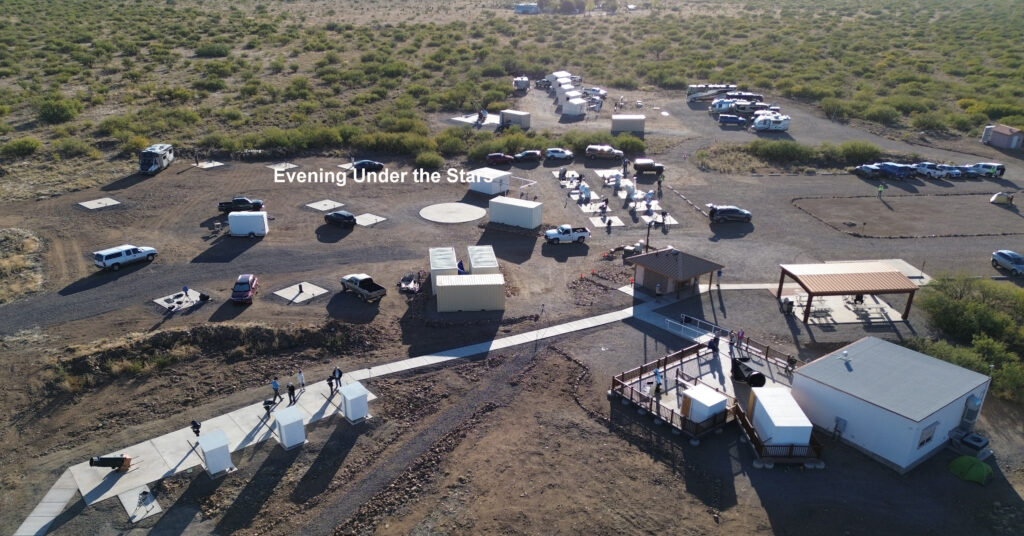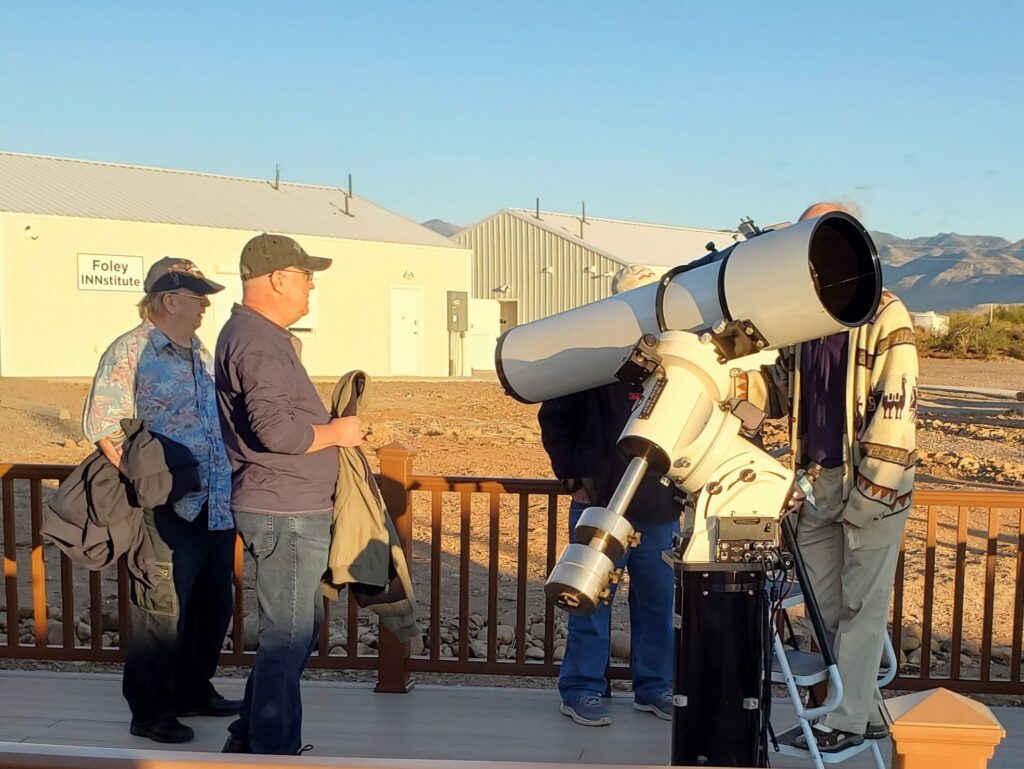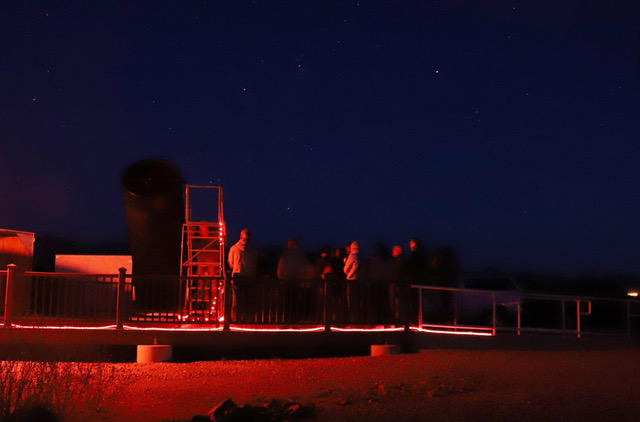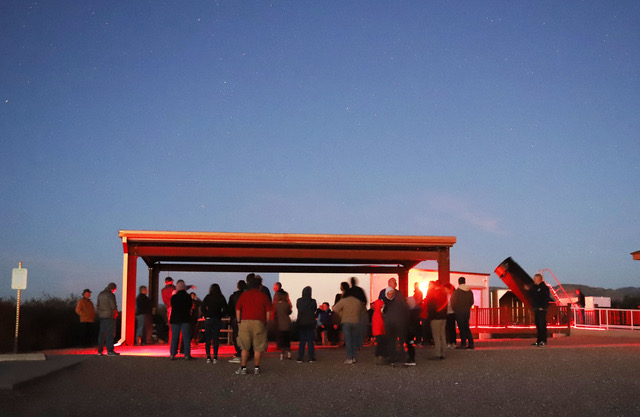by Erich Karkoschka
Planets for October 2019
by Erich Karkoschka
Planets for October 2019
by Erich Karkoschka
Planets for Summer 2019 (June – September)

The next Evening Under the Stars at the TAAA Chiricahua Astronomy Complex (CAC) is scheduled for Saturday April 13, 2024
The gate will be open at 6:30 pm with the program starting at 7 and we will be observing until around 9:30. If you are still thinking whether to attend, this is a fantastic opportunity to view celestial objects under some incredibly dark skies using several large telescopes. We have a 40″ mirror Dobsonian, a 9″ lens Refractor, and a 14″ mirror Schmidt-Cassegrain telescope that will be open for observing. We will also have several other telescopes open to observe through.
You will see galaxies millions of light years away, star clusters, multiple star systems, nebulae, and lots more. Many of these are visible to the naked eye under our dark skies.
Definitely a family event that is a great opportunity for kids. Although it is a bit of a drive from Tucson, you can spend the day at the Chiricahua National Monument, grab something to eat, then come over to our Chiricahua Astronomy Complex (CAC) for an evening of telescope observing. CAC is only about 15 miles from the Chiricahua National Monument.
There is no cost to attend but reservations are required so we can notify you by email how to get to CAC and let you know if there are any weather issues. Please email John Kalas to make reservations: euts[at]tucsonastronomy.org not later than Wednesday April 10th (PROVIDE number of attendees, vehicles, and contact email for notification of any event changes). We will also post any updates on our Evening Under the Stars Facebook Event page, so follow the event for any real-time updates. Hopefully we will see you at CAC!



by Erich Karkoschka
by Erich Karkoschka
(By Jim Knoll)
We have quite a few public events in the next two months and are all free unless otherwise noted below. All are weather dependent and could be cancelled if we have extensive cloud cover. They are also posted on the TAAA Calendar so you can get directions and additional information. The All our public events are also posted on then TAAA Facebook Page as an Event and you can follow one and get weather and other updates in real-time.
January 12. Catalina State Park. 6:30 – 9:30 pm. State Park entrance fee required.
January 19. Tucson Mountain Park Ironwood Picnic area. 6 – 8 pm.
January 20. Total Lunar Eclipse. University of Arizona Mall just south of Flandrau Science Center. We will have several telescopes set ups to view the total eclipse. Partial begins 8:33 pm. Total from 9:41 – 10:43 pm, and partial again after that. We will have telescopes operating from 8 – 11 pm. Flandrau Science Center will also be open late.
February 2. Tucson Mountain Park Ironwood Picnic area. 6:30 – 8:30.
February 9. Two events scheduled
— Tucson Star Party, co-hosted with Astronomy Magazine. Pima Community College East
Campus. Solar observing 10 am to 5:30 pm. Evening observing from 6:30 – 9 pm. Astronomy Magazine Blog Post: http://cs.astronomy.com/asy/b/astronomy/archive/2019/01/02/the-tucson-star-party-will-be-a-day-of-sun-and-stars.aspx.
— Agua Caliente Park. 6:30 – 8:30 pm.
Come join us for any of these events. They are a lot of fun and really good for a family activity.
We have a naked eye (from a dark site) comet visible (arrow). It is Comet 46P Wirtanen. Ed Foley, one of our TAAA members, took this picture from our Chiricahua Astronomy Complex dark-sky site during last weekend’s events (Saturday December 8, 2018). You can see one of our observatories as well. Those present observed it through several telescopes. It was also observed at last Saturday’s Ironwood Picnic Star Party and will be observed at this coming weekend (December 15) Agua Caliente Park star party.
Want to have a fun astronomy night in downtown Tucson? Hear interesting talks focused on Astronomy? Tucson is participating in a national astronomy program called “Astronomy on Tap” or “Space Drafts”. This program is sponsored by the National Optical Astronomy Observatory (NOAO) and UA Lunar & Planetary Lap (LPL). The Astronomy on Tap Space Drafts website is: https://astronomyontap.org/locations/tucson-az/.
The next Space Drafts will be Wednesday November 14, 2018 at 7 PM with the talks starting at 7:30. The event is held at Borderlands Brewing Company, 119 E Toole Ave, Tucson, AZ. The two scheduled talks are:
“Amateur Astronomy in Tucson” by Jim Knoll, Star Party Coordinator for the Tucson Amateur Astronomy Association.
“The first galaxies: coming soon to a space telescope near you” by postdoc Dr. Christina Williams, Steward Observatory.
Saturday April 13, 2019 at Brandi Fenton Memorial Park, 3480 E River Road (River & Alvernon), Ramada A from 3 PM to 9 PM. Come join Tucson Amateur Astronomy Association and other astronomy related industries celebrating Tucson Astronomy. In addition to interactive exhibits and door prizes, we will have Solar Telescopes for safe viewing of the Sun plus lots of telescopes in the evening to observe star clusters, nebulae, galaxies, planets, and much more. Bring your personal telescope if you want some help learning to operate it. For real-time updates, follow the event on our Facebook Events page at: https://www.facebook.com/TucsonAstronomy/ or click on the Media link above. By following TAAA on Facebook, you can get updates on all our public stargazing and other astronomy events.